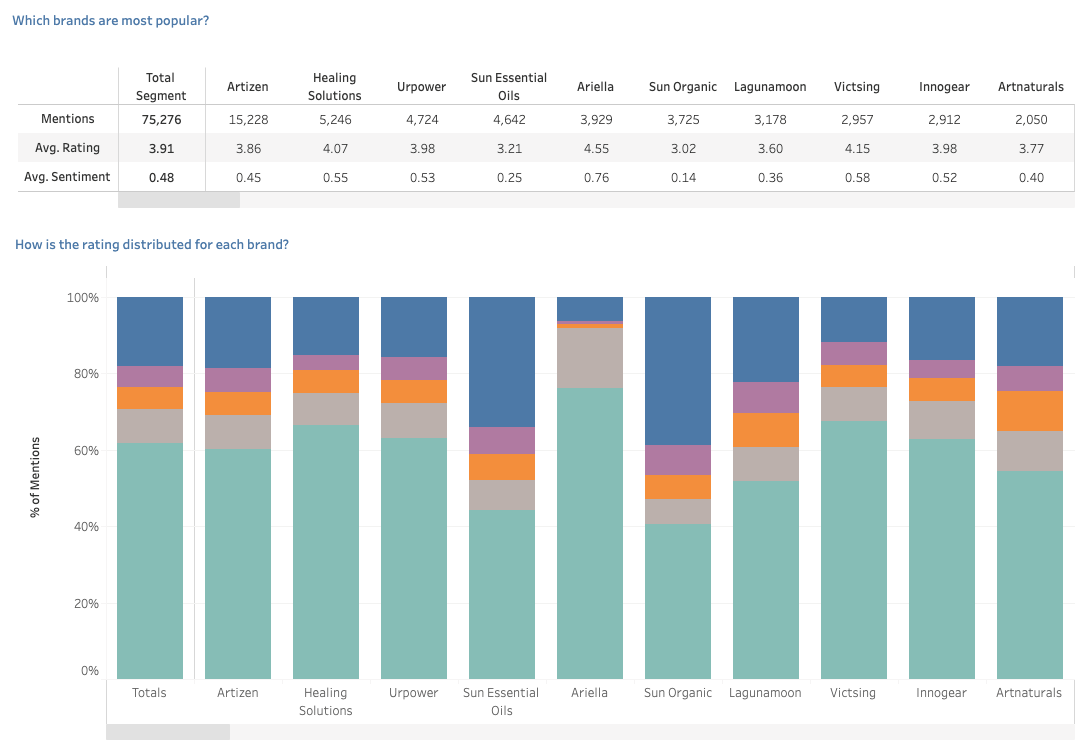We often tend to romanticize the stories about intense rivalries like Steve Jobs vs Bill Gates, Arnold vs Stallone, Messi vs Ronaldo, etc, and if the rivalry has a bit of an underdog story similar to that of David vs Goliath then the interest levels peak. Well, when we correspond the same to various brands and their fierce competition among each other, there are few aspects which pop-up evidently. Every successful brand builds efficiencies in particular aspects of their business and rework them continuously to gain more insights. For some businesses, these insights might be intuitive but in this age of information overload and clutter of data, extracting insights that are actionable involves building complex analytical models and queries.
Gathering business insights the traditional way
The traditional approach of getting business insights involved a combination of focused market research campaigns, brand study, and intuitive hypothesis basis limited customer interaction. Such an approach might not elicit the actual emotional thought process and expectations from a consumer which in turn can be used to create efficiencies in various processes or innovate new products. This approach lacks the flexibility for the current age as the trends, customer preferences, and economic climate changes happen at a rapid pace. Adding these data points to the research increases the complexity and at times the analysis might become obsolete by the time the report is published.
For example, assume that you were launching a shopping website optimized for Internet Explorer and you had authorized a study on the same. While the study is underway, the consumers start shifting to Google Chrome and Mozilla Firefox. The change happens in a rapid and stealth manner that you as a firm might have an optimized website for Internet Explorer but the greater business opportunity would be lying with Chrome and Firefox. It would be a double whammy of sorts as the study would be redundant and the first-mover advantage too is lost.
Gaining deep customer insights
Deep customer insights is a granular and intimate shared understanding of the customer psyche which involves deep inspection of the spoken and latent, current, and future needs. Such depth may not be possible through traditional methods especially market research through surveys and questionnaires as the number of data points to be recorded would be very high and customer fatigue would creep in while answering long questionnaires. The other factor is that traditional methods can’t be implemented at a scale unlike building analytics models or data capturing infrastructure while mining deep insights. Creating a framework where data can be used for decision making will help small and medium enterprises to create superior products with better resource allocation and for large-scale companies, it helps optimize their marketing and R&D budgets.
Doing things the amazon way
Amazon’s advantage is the scale not only with product sales, but also product feedback on what sells. The company uses data on its portal to develop and launch private labels for products with high sales. The information available with amazon helps them understand how to price a product, at what margins they need to operate, features that can be included, and whether the segment is a viable business opportunity. According to an article in wall street journal, Amazon used data about a niche category of bestsellers sold by a third-party vendor like car trunk organizer. The information accessed included total sales which give an idea of the opportunity, marketing and shipping spend, and the fee charged as commission. The data was used to introduce Amazon’s own car-trunk organizers thus helping Amazon achieve higher margins when compared with third-party retailers. Most retailers introduce their own brands using data to some extent but the information they have is far less than what is available to Amazon. This allows Amazon to be more dynamic in terms of pricing the product as per current economic conditions.
Can the Amazon data mining model be replicated?
It might not be possible to replicate the process in its entirety as Amazon has access to proprietary data and the amount of information available is vast. However, we can use publicly available data on Amazon and augment this feedback with other public and private sources to build a robust solution. This is precisely what SetuServ’s VOCIS platform offers. The platform mines consumer feedback from multiple online sources including eCommerce platforms (this includes Amazon bestsellers data), business listing sites, social media portals, travel sites, and all other major sources for reviews. The platform uses machine learning to mine through millions of data points and serves up insights. The two biggest advantages of the platform are 1) it has the ability to integrate data and insights across channels, both public and private, and 2) it is fully customizable per domain, brand, company, and/or business solution. The ability to customize helps in avoiding redundancy and aides in scaling up the solution for future use and integration to business operations.
Existing solutions vs VOCIS
SetuServ’s VOCIS platform is modeled on the basis of granular insights to uncover the WHY on consumer’s behavior to purchase. Granular insights and the ability to benchmark against competition separates VOCIS from existing platforms. In simple terms, AI models can be customized as per client’s data and use cases, thus, helping deliver insights that are actionable.
As popularity for VOCIS grows, so do the ready-made available live data portals. Two such industry-specific solutions are:
- Beauty and Skincare VOCIS Platform
- Health and Wellness VOCIS Platform
Sneakpeek: Insights offered by VOCIS solution
VOCIS solution mines millions of consumer review data points via multiple channels and integrates them to serve upmarket research insights. The comprehensive approach was taken by the VOCIS platform while mining data gives the user a holistic understanding through three key modules:
- Market Landscape
- Deep Dive Analysis
- Flash Trends

